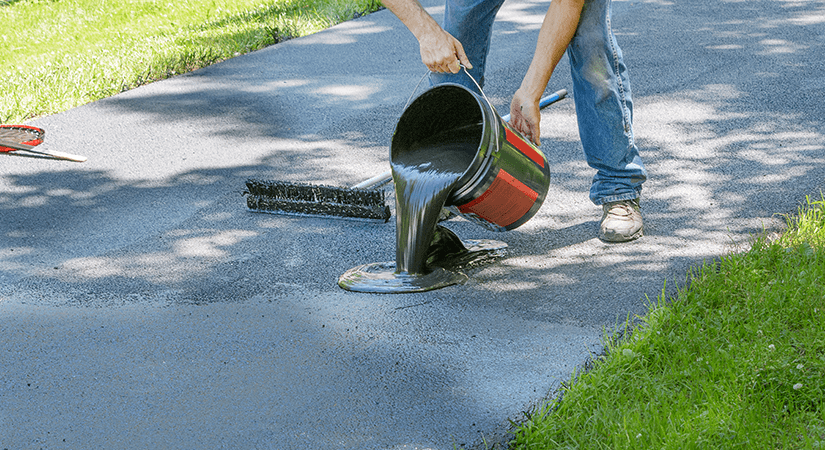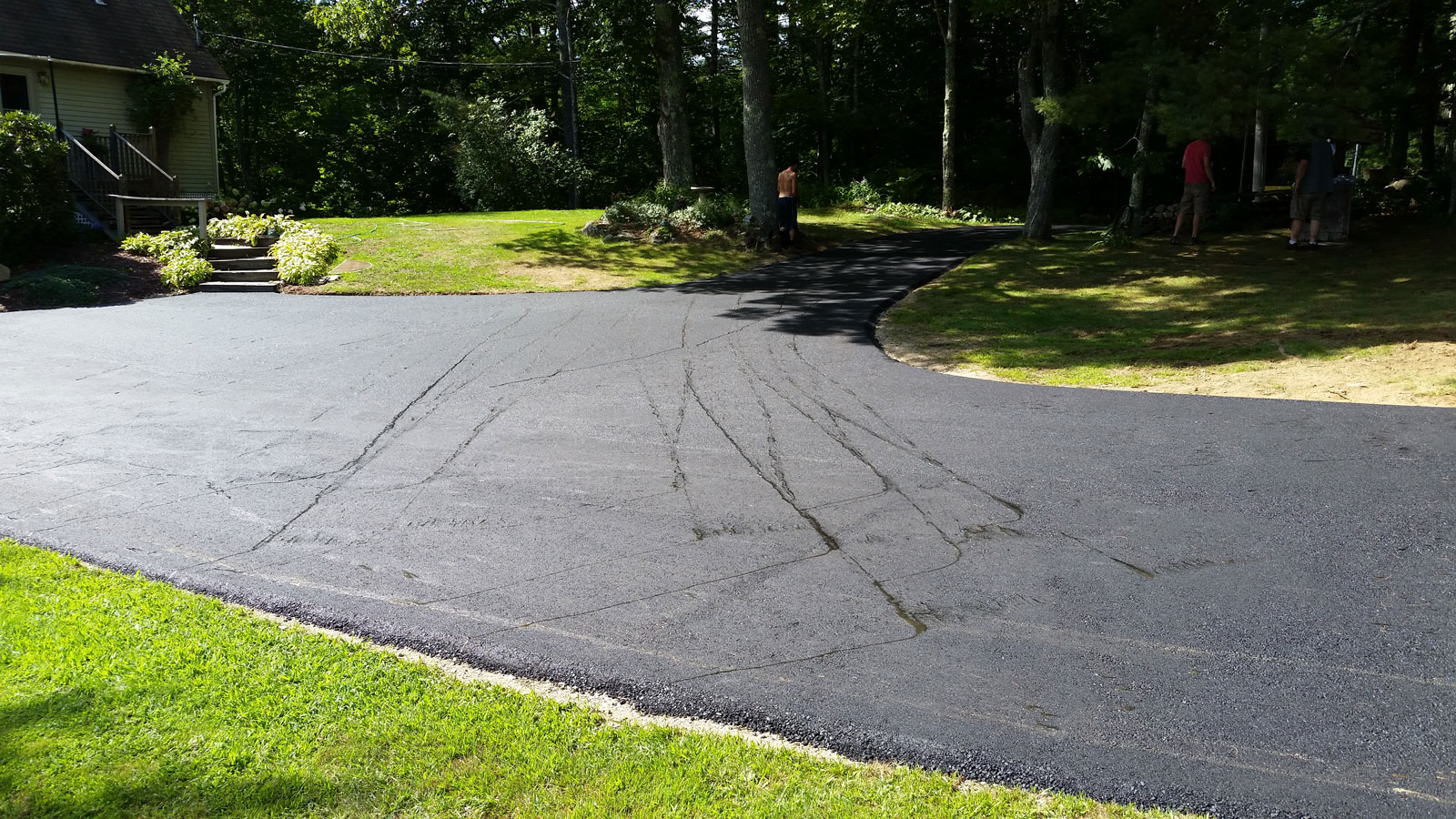Warm Mix Asphalt: A Lasting Solution for Pavement
Hot Mix Asphalt (HMA) has arised as a leading lasting selection for sidewalk solutions, using a myriad of ingenious modern technologies and ecological advantages. Its ability to recycle products and reduce power intake presents a compelling instance for its fostering in roadway building jobs. The long-term performance and durability of HMA make it a favored choice for framework growth. As the need for environment-friendly building practices expands, exploring the subtleties of HMA's sustainability can supply important understandings into the future of pavement remedies.
Environmental Benefits of Hot Mix Asphalt

Moreover, Warm Mix Asphalt assists to alleviate urban warm island results. Its dark color soaks up sunshine, minimizing the quantity of heat showed back right into the atmosphere contrasted to lighter-colored sidewalks. This can lower ambient temperatures in city areas, reducing the need for air conditioning and eventually decreasing power intake.
On top of that, Hot Mix Asphalt contributes to enhanced stormwater monitoring. Its permeable nature permits water to reenergize and penetrate the sidewalk groundwater supplies, reducing runoff and the risk of flooding. These ecological advantages make Warm Mix Asphalt a lasting selection for leading roadways and freeways.
Power Performance in HMA Production
Is power efficiency a crucial factor in the production of Hot Mix Asphalt (HMA)? Power plays a substantial role in the production of HMA, influencing both expense and environmental sustainability. One key facet of energy performance in HMA manufacturing is the usage of warm mix asphalt (WMA) modern technologies.
Furthermore, improvements in plant technologies have led to even more energy-efficient HMA manufacturing processes. By enhancing power use in HMA production, the market can lower its carbon footprint while maintaining top notch sidewalk materials.
Recyclability of Hot Mix Asphalt
The recyclability of Warm Mix Asphalt (HMA) is an essential element of its sustainability and long-lasting environmental effect. HMA is among one of the most recycled products in the United States, with over 100 million lots of reclaimed asphalt pavement (RAP) being recycled annually in new pavement building and construction. Reusing HMA supplies several environmental benefits, such as decreasing the requirement for virgin products, decreasing power intake during manufacturing, and lowering the quantity of waste sent out to land fills.
The process of reusing HMA involves milling the existing pavement, crushing it into smaller sized items, and blending it with brand-new accumulation and asphalt binder to produce a recycled mix. This recycled mix can usually perform as well as or even better than traditional HMA, while needing less basic materials and creating lower greenhouse gas emissions. By incorporating RAP into brand-new sidewalk jobs, roadway firms can preserve natural deposits, minimize expenses, and reduce the environmental footprint of road building and maintenance tasks. In general, the recyclability of HMA plays a considerable function in advertising sustainable practices within the sidewalk market.

Long-Term Performance of HMA
Asphalt sidewalks show longevity and strength over an extended basics period, showing the long-lasting efficiency of Hot Mix Asphalt (HMA) The longevity of HMA can be attributed to its capacity to stand up to rush hour tons, extreme weather, and the impacts of aging. Research studies have actually shown that well-designed and appropriately constructed HMA pavements can last for 20 years or more with routine maintenance. The key to making best use of the long-lasting performance of HMA hinges on using top quality materials, following best techniques in building and construction, and applying reliable upkeep techniques. Proper water drainage, regular inspections, and timely fixings are necessary for protecting the architectural stability of HMA sidewalks gradually. Furthermore, advancements in HMA modern technology, such as making use of polymer-modified binders and warm mix asphalt, have actually additionally enhanced the durability and durability of HMA pavements. By focusing on quality building and construction and upkeep techniques, HMA remains to verify itself as a sustainable and cost-effective solution for resilient pavement framework.

HMA: Toughness and Sustainability
Demonstrating both resilience and sustainability, Warm Mix Asphalt (HMA) has come to be a foundation in the construction of durable pavement frameworks - angled parking. HMA's longevity why not find out more comes from its capacity to stand up to hefty tons, rough weather condition problems, and high traffic quantities, making it a reliable her latest blog option for roadways, highways, and airport terminal runways. The structure of HMA, which typically includes accumulations, binder, and filler, plays an essential function in boosting its longevity and resistance to tear and put on
Furthermore, HMA's sustainability exists in its recyclability and energy-efficient manufacturing process. The capability to recycle redeemed asphalt pavement (RAP) in new HMA blends lowers the demand for virgin materials and lessens the ecological influence of pavement construction and maintenance. In addition, the power efficiency of producing HMA lies in its reduced blending temperature levels compared to other sidewalk materials, bring about lowered energy usage and greenhouse gas exhausts.
Verdict
Finally, warm mix asphalt (HMA) supplies a sustainable service for pavement with its eco-friendly features. HMA's recyclability, power performance in manufacturing, and lasting durability make it an environment-friendly choice for road construction. By conserving natural deposits, lowering waste, and decreasing greenhouse gas discharges, HMA plays a vital function in promoting sustainability in infrastructure development. Its capacity to minimize city warm island impacts even more underscores its importance in developing environmentally conscious and durable sidewalk systems.
HMA is one of the most recycled materials in the United States, with over 100 million bunches of recovered asphalt pavement (RAP) being recycled yearly in brand-new pavement building and construction.The process of reusing HMA involves grating the existing pavement, squashing it into smaller sized pieces, and blending it with brand-new aggregate and asphalt binder to develop a recycled mix.Asphalt pavements show toughness and resilience over a prolonged period, showing the long-term performance of Warm Mix Asphalt (HMA) Additionally, innovations in HMA innovation, such as the usage of polymer-modified binders and warm mix asphalt, have better improved the longevity and durability of HMA sidewalks. The ability to reuse redeemed asphalt pavement (RAP) in new HMA blends reduces the demand for virgin products and reduces the ecological impact of sidewalk building and upkeep.
Comments on “Discover the Power of Business Car Park Leading and Asphalt Sealing”